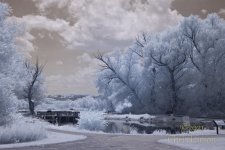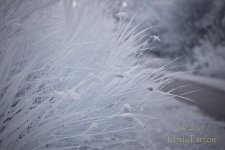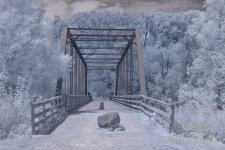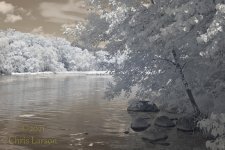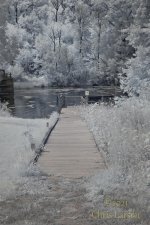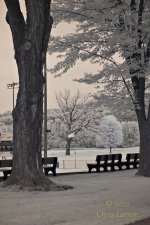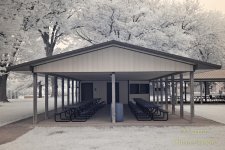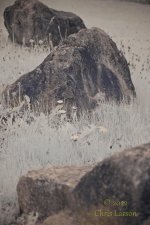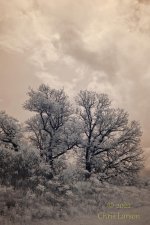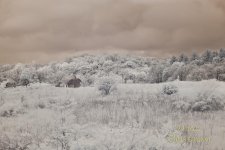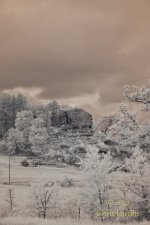You are using an out of date browser. It may not display this or other websites correctly.
You should upgrade or use an alternative browser.
You should upgrade or use an alternative browser.
I'm back in the infrared photography game.
- Thread starter BF Hammer
- Start date
BF Hammer
Senior Member
Here are some more early shots. When first arrived, KEH had the camera reset to factory. This being the 2nd image from my front yard after I fitted my 24-120mm f/4 lens.
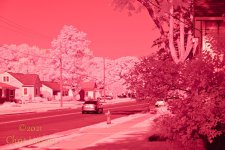
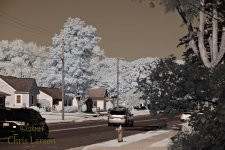
For the 2nd photo I quickly aimed to the grass, took a WB preset sample, and took another photo.
2 days later due to bad weather... Jenni & Kyle Preserve in Madison, WI. This time using 50mm f/1.8G
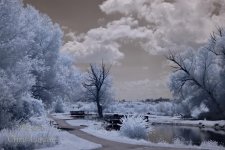
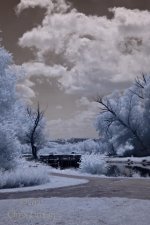
Desaturated the next to B/W since they were mostly monochromatic anyhow. Really bumped up the contrast and black level too.
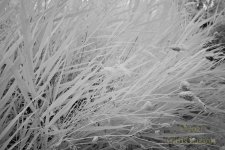
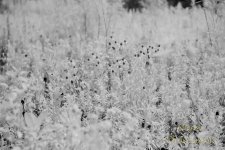
I am tempted to try my 70-200mm f/2.8 next and chase around the birdies and the bunny rabbit in my back yard.


For the 2nd photo I quickly aimed to the grass, took a WB preset sample, and took another photo.
2 days later due to bad weather... Jenni & Kyle Preserve in Madison, WI. This time using 50mm f/1.8G


Desaturated the next to B/W since they were mostly monochromatic anyhow. Really bumped up the contrast and black level too.


I am tempted to try my 70-200mm f/2.8 next and chase around the birdies and the bunny rabbit in my back yard.
BF Hammer
Senior Member
Not one of my best photos from the lunch at the bridge park, but a good one to try the 3 common ways to adjust the color on a 720nm infrared.
I have tended to just prefer to leave the color as-is when the white balance is properly referenced to the green foliage. I will use the WB eyedropper tool in post on the leaves if needed. Contrast and exposure are the main things to move. This leaves the sky (and reflection in water) looking a copper color from what red is present in the light.
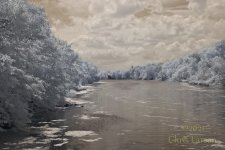
Many will object to the sky color and swap the red and blue channels in post. This will put a cyan color into the sky and sky reflections. I think this might be more pleasant in the IR conversions that use a shorter wavelength cutoff that extends further into the visible spectrum. 720nm is just barely into the deep red (and auto taillights show very red). What it really does here is make an equally alien sky look, at least in my opinion. If this gives you a brain-itch like you have seen this color palate elsewhere, go watch the opening scene of Star Trek: Into Darkness. The alien planet is almost exactly this look.
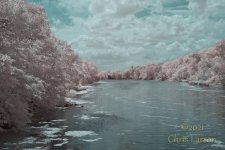
And my preference when there is no sky is to just desaturate to a B/W like film infrared. I tend to exaggerate the contrast when I do this, but who doesn't like to do that in B/W?
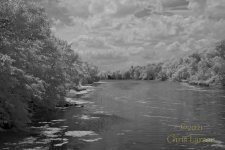
I have tended to just prefer to leave the color as-is when the white balance is properly referenced to the green foliage. I will use the WB eyedropper tool in post on the leaves if needed. Contrast and exposure are the main things to move. This leaves the sky (and reflection in water) looking a copper color from what red is present in the light.

Many will object to the sky color and swap the red and blue channels in post. This will put a cyan color into the sky and sky reflections. I think this might be more pleasant in the IR conversions that use a shorter wavelength cutoff that extends further into the visible spectrum. 720nm is just barely into the deep red (and auto taillights show very red). What it really does here is make an equally alien sky look, at least in my opinion. If this gives you a brain-itch like you have seen this color palate elsewhere, go watch the opening scene of Star Trek: Into Darkness. The alien planet is almost exactly this look.

And my preference when there is no sky is to just desaturate to a B/W like film infrared. I tend to exaggerate the contrast when I do this, but who doesn't like to do that in B/W?

BF Hammer
Senior Member
I shopped at my local camera shop yesterday for a cheap zoom lens. Had a Benjamin in my pocket and came home with a used Nikkor 28-105mm f/3.5-4.5D. Basically a 20 year old kit lens, but I think it will fill the bill for my infrared work. It's mostly outdoors in sunlight.
From lunch today at a park I normally shoot in the middle of the night. Darker than normal sky here considering the location.
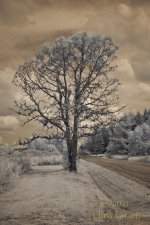
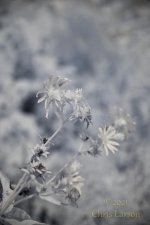
Second photo was yellow daisies I shot at 105mm with the macro switch engaged. It's a 1:2 "macro" mode of this lens, so the term is used loosely.
From lunch today at a park I normally shoot in the middle of the night. Darker than normal sky here considering the location.


Second photo was yellow daisies I shot at 105mm with the macro switch engaged. It's a 1:2 "macro" mode of this lens, so the term is used loosely.

